
Chiropractic Care
Chiropractic is a branch of the healing arts built on the understanding that good health depends, in part, on a normally functioning nervous system. The doctors at ChiroFit in Barrington, Illinois, use chiropractic to treat a wide variety of conditions, from back and neck pain to carpal tunnel syndrome.
Make an appointment with ChiroFit to learn how locating and adjusting a musculoskeletal area of the body that's functioning improperly can make a change in your entire health and well-being. Call ChiroFit or use the convenient online booking tool to schedule your appointment.
Make an appointment with ChiroFit to learn how locating and adjusting a musculoskeletal area of the body that's functioning improperly can make a change in your entire health and well-being. Call ChiroFit or use the convenient online booking tool to schedule your appointment.

Chiropractic Care Q&A
What conditions does chiropractic care treat?
Injuries or illnesses are an inevitable part of living. The causes can include sports injuries, on-the-job injuries, automobile accidents, migraine headaches, and arthritis, to name a few. It’s not whether you’ll experience a physical setback in life, but when. How pain enters your life may be beyond your control, but you do have choices in how to deal with it. The doctors at ChiroFit offer manual adjustments and physical therapy to improve your acute discomfort and provide long-term solutions.
Is chiropractic treatment safe?
Chiropractic is recognized as one of the safest types of health care in the world. Numerous studies, including those funded by governments, universities, and nonprofit research institutions, have proven it to be a successful primary therapy for neuro-musculo-skeletal conditions — a therapy that is safer, in fact, than most medical procedures used to treat the same conditions. Chiropractic is also widely used as a complementary mode of care for a variety of other conditions and diseases and to promote overall health and well-being. Your body is designed to be a self-healing and self-regulating being. When ill health, pain, or disease set in, that’s a sign that something is interfering with your body’s ability to heal and regulate itself. Chiropractors are the only health professionals that are uniquely trained to locate and remove these interferences, thus allowing the body to heal itself.
Can chiropractic care cause damage to your joints?
Chiropractic care doesn’t damage your joints, and most adjustments are painless. The adjustment can provide relief of your painful symptoms and restore range of motion immediately in many cases. While you may be alarmed by the “pop” that an adjustment can produce, the sound is not coming from the bones themselves. It’s coming from a lubricant called synovial fluid that’s found in every joint. That fluid contains dissolved gases. Separating joints creates a change in pressure, which forces the gases to rapidly escape, creating the “pop.”

Dry Needling
Dry Needling addresses pain and tightness in a variety of muscles. It’s a Western method of treatment that research supports as part of a comprehensive treatment plan to optimize function. The doctors at ChiroFit in Barrington, Illinois, offer dry needling as part of their physical therapy and chiropractic treatments. Consult with ChiroFit to learn more about how dry needling can help your soft tissue injuries feel better quickly. Call ChiroFit or use the online booking agent to make an appointment.
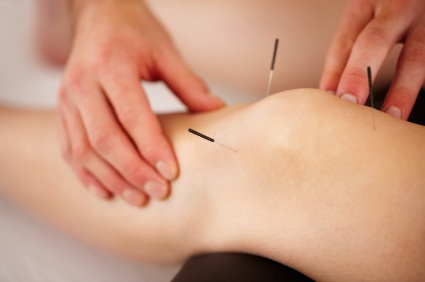
Dry Needling Q&A
What is dry needling?
Dry needling is a soft tissue therapy technique that involves inserting super fine filament needles into specific muscular trigger points. Dry needling resets the neuromuscular inputs currently in place in a muscle, leading to its relaxation and a decrease in pain.How does dry needling work?
Dry needling helps alleviate immediate pain and discomfort, but it also treats the root of the problem causing your symptoms. When the tiny needle is inserted into a trigger point or knot in your muscle, it “resets” the dysfunctional muscle by quieting the overactive electrical activity that causes the muscle to tighten and become inflamed. The needle prompts a natural “twitch” effect that restarts the muscle and restores its natural function. Dry needling also increases circulation and reduces tension.Does dry needling hurt?
The needles are exceptionally thin, so you don’t feel pain due to its entry into your skin. The needle may induce some spasm or cramping at the painful site, however. You may feel slight soreness the day after treatment, but most people tolerate the therapy very well.Is dry needling different than acupuncture?
Acupuncture is an Eastern medicine treatment that deals with energy meridians. Dry needling specifically addresses muscular trigger points and thus has a musculoskeletal purpose. The intent of dry needling is very specific: to reset a dysfunctional muscle.What types of conditions can dry needling treat?
Dry needling is effective for a number of soft tissue problems caused by muscle overload, poor posture, repetitive movement, trauma, or joint dysfunction. These include:- Back, neck, and shoulder pain
- Tennis elbow, carpal tunnel syndrome, and plantar fasciitis
- Migraines
- Sciatica
- Hip, hamstring, and quadricep pain
- Calf tightness and spasms
How many dry needling sessions will I need?
Physical therapy and chiropractic treatments are individualized to your specific condition. You may need several treatments to experience complete relief from your pain and tightness. Dry needling is also most effective when paired with other soft tissue therapies. You may also benefit from corrective exercises that help retrain your movement patterns, so you avoid experiencing muscle dysfunction in the future.
Physical Therapy
Physical therapy resolves ongoing symptoms of muscle and joint pain, and teaches your body new movement patterns to prevent them from recurring in the future.
Painful issues in your joints and back are effectively treated with physical therapy. Some specific conditions that respond well to physical therapy include:
The chiropractors at ChiroFit in Barrington use scientific principles of tendon, joint, and muscle physiology to guide this rehabilitative and therapeutic approach to pain.
Painful issues in your joints and back are effectively treated with physical therapy. Some specific conditions that respond well to physical therapy include:
- Plantar fasciitis
- Carpal tunnel syndrome
- Hip pain or loss of hip motion
- Sciatica and lower back pain
- Shoulder pain in the rotator cuff or labrum
- Knee injuries
- Shoulder injuries
The chiropractors at ChiroFit in Barrington use scientific principles of tendon, joint, and muscle physiology to guide this rehabilitative and therapeutic approach to pain.

Physical Therapy Q&A
What conditions can physical therapy treat?
The question should be, “What conditions can’t physical therapy treat?”What is Functional Range Conditioning®?
The FRC® system allows the doctors to improve joint health, decrease pain, and increase overall functionality throughout a person’s life. ChiroFit uses FRC with their patients and CrossFit athletes and sees great results in terms of pain relief, range of motion, and reduced injury risk.What is Functional Range Release®?
FRR® is a system based on finding faults within a person’s range of motion in order to improve the safety and efficiency of their range of motion. It’s a comprehensive system of soft tissue assessment, treatment, and rehabilitation. Our doctors use Functional Range Release as a way to diagnose muscular complaints and dysfunctions and restore proper mobility to joints.What is Instrument Adhesion Release?
Instrument-assisted therapy remodels damaged and scarred tissue that restricts a person’s range of motion. It’s combined with other manual therapies in the office in order to get patients the best results possible. Using the flat, metallic instrument helps the staff work through muscles that are close to the surface of the skin, including the forearms, knees, feet, and spine.What is the Functional Movement Screen?
The FMS is a movement screening test used with athletes to measure their risk of injury. By testing multiple functional movements from side to side, the doctors can determine areas of weakness and dysfunction and help to prevent or correct injuries.What is Manual Adhesion Release?
Manual Adhesion Release diagnoses and treats scar tissue and muscular adhesion. It involves applying force along the fibers of a tissue in order to remodel the tissue. This makes it a more effective technique when compared with foam rolling or other pressure-based methods. Scar tissue or adhesion can form in muscles simply from overuse or sustained poor posture, and it’s one of the most common reasons for dysfunction and pain.
Neck Pain
Neck pain treatment depends on the suspected cause of your pain. ChiroFit practioners will go through a thorough examination to find the underlying cause of your neck pain. Then manual adjustments that gently move the joints your neck right to left and left to right, as well as in a figure-eight pattern, are commonly used.
The ChiroFit staff also provides physical therapy to heal injured soft tissue in the neck that can cause neck pain. The doctors help you retrain movement patterns and improve your posture to optimize range of motion and relieve pain. Exercises also help prevent neck pain from recurring in the future.
The ChiroFit staff also provides physical therapy to heal injured soft tissue in the neck that can cause neck pain. The doctors help you retrain movement patterns and improve your posture to optimize range of motion and relieve pain. Exercises also help prevent neck pain from recurring in the future.

Neck Pain Q&A
When should I see a chiropractor for neck pain?
The occasional stiff neck may resolve within a day. But if you have pain or stiffness that doesn’t get better after a few days, you can benefit from a chiropractic visit. Other signs that manual therapy and physical therapy will help include:- You rely on over-the-counter pain medications to make it through the day
- You have headaches in addition to the neck pain
- You can’t turn your head readily
- You have numbness or tingling in your hands, shoulders, and fingers along with the neck pain
- The neck pain began after a car accident
What are causes of neck pain?
Neck pain can arise from many different instances. Poor work ergonomics, trauma, or even sleeping awkwardly on your pillow can cause you to feel pain in your neck. The muscles, ligaments, and joints of your spine need optimal movement to allow your spine to work properly and efficiently. Pain is like a warning light on your car, it’s your body telling you that there is something not working how it should. ChiroFit will dedicate their time to finding the root cause of your neck pain.Automobile accidents are notorious causes of neck pain in the form of whiplash. Whiplash occurs when you experience a jarring movement that over stretches and possibly tears the tendons and ligaments of the neck.What causes movement dysfunction in your cervical spine?
Prolonged and inefficient postures can affect the way your neck feels and the way the bones move and function. If you’re often leaning over a keyboard, cell phone, or other mobile device, it can affect your posture and neck alignment. Other causes include:- Sleeping on your stomach, or with a flat pillow or no pillow
- An accident
- Natural degeneration and aging
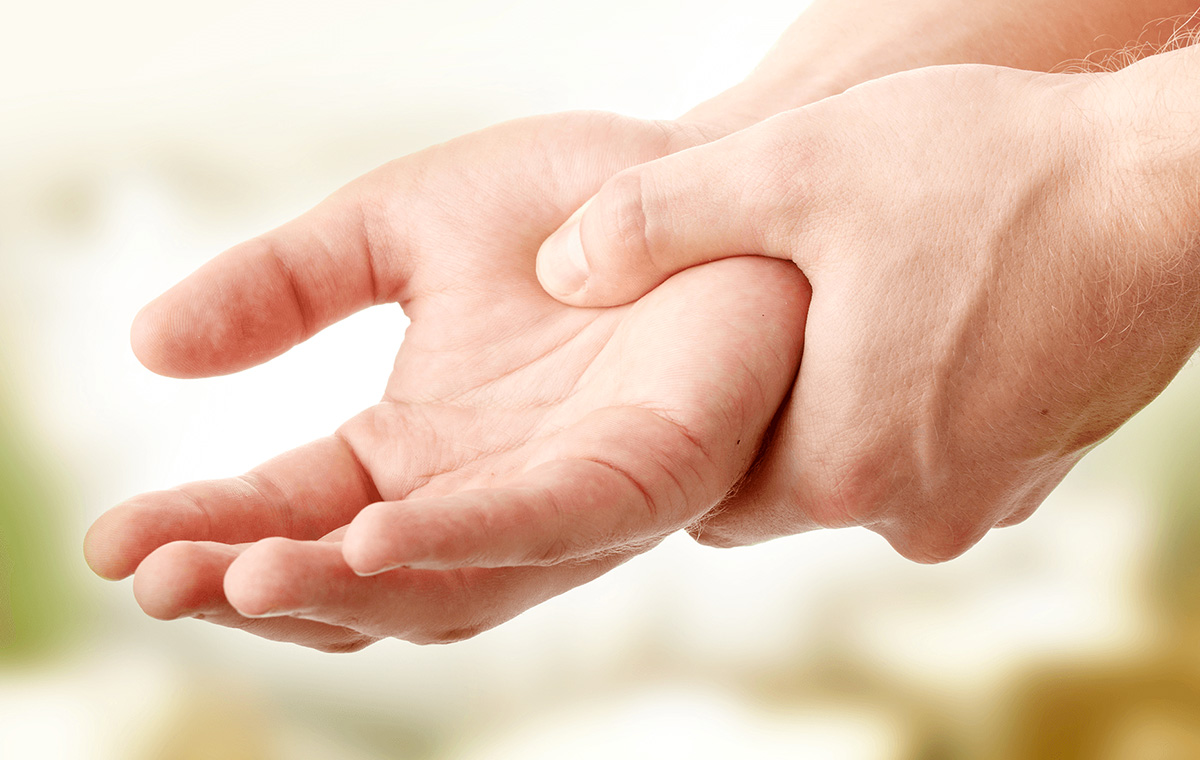
Carpal Tunnel
Research shows that many people with carpal tunnel syndrome also have neck pain or cervical nerve root compression. This means that carpal tunnel pain may have origins in the upper spine, rather than in the wrist and arm. Chiropractic noninvasively manipulates the upper spine to relieve irritation and pain in the wrist. At ChiroFit, the doctors offer manual therapy, trigger point therapy, soft tissue therapy, as well as stretching and strengthening exercises to relieve and resolve your pain. These are viable options to invasive surgery and anesthesia. If your carpal tunnel syndrome is a result of repetitive movement, you may also explore ergonomic solutions that involve equipment placement and desk design to reduce strain on your neck and wrists.

Carpal Tunnel Q&A
What causes carpal tunnel syndrome?
The median nerve runs from the forearm into the palm and is responsible for sensation in the palm side of the first four fingers and the thumb. It runs through the carpal tunnel -- a collection of ligaments and bones that leads into the hand. Irritated tendons and other inflammation narrow the carpal tunnel, causing compression on the median nerve and the telltale symptoms of carpal tunnel.What are the symptoms of carpal tunnel syndrome?
Carpal tunnel syndrome symptoms range from mild to severe. You might experience:- Tingling, numbness, and feelings of your hand “falling asleep”
- Pain and numbness in your hand, wrist, and forearm that awakens you from sleep
- Pain while gripping objects
- Aching in your forearm
- Stiff fingers, especially first thing in the morning
Who is at risk of developing carpal tunnel syndrome?
Women develop carpal tunnel syndrome far more frequently than men, especially women aged 40-60. Other risk factors include:- Repetitive hand and wrist movement
- Health problems that increase inflammation, including rheumatoid arthritis and diabetes
- Smoking
- Injury to the wrist
- Joint wear and tear due to aging
How can chiropractic care help with carpal tunnel syndrome?
Research shows that many people with carpal tunnel syndrome also have neck pain or cervical nerve root compression. This means that carpal tunnel pain may have origins in the upper spine, rather than in the wrist and arm. Chiropractic noninvasively manipulates the upper spine to relieve irritation and pain in the wrist. At ChiroFit, the doctors offer manual therapy, trigger point therapy, soft tissue therapy, as well as stretching and strengthening exercises to relieve and resolve your pain. These are viable options to invasive surgery and anesthesia.If your carpal tunnel syndrome is a result of repetitive movement, you may also explore ergonomic solutions that involve equipment placement and desk design to reduce strain on your neck and wrists.
Shoulder Pain
Most shoulder pain involves the joint’s tendons, ligaments, and other soft tissue, rather than the bones. Tightness, scar tissue buildup, tension, and muscular dysfunction contribute to shoulder pain, which can radiate into your neck, back, and head. Whether you have an acute injury to your shoulder or suffer from chronic pain, ChiroFit practioners offer noninvasive, long-term treatment.Most shoulder pain involves the joint’s tendons, ligaments, and other soft tissue, rather than the bones. Tightness, scar tissue buildup, tension, and muscular dysfunction contribute to shoulder pain, which can radiate into your neck, back, and head. Whether you have an acute injury to your shoulder or suffer from chronic pain, ChiroFit practitioners offer noninvasive, long-term treatment.
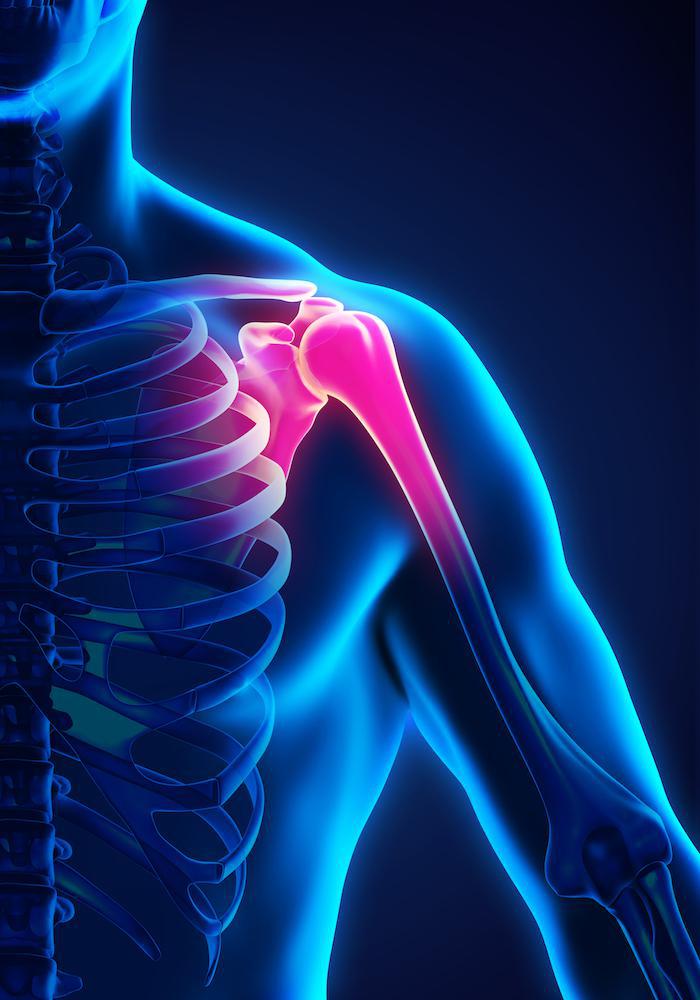
Shoulder Pain Q&A
What causes shoulder pain?
Shoulder pain may be due to any number of issues. It’s a complex joint with numerous muscles, ligaments, and tendons that move with a wide range of motion. Pain may come on relatively suddenly, or develop gradually over time. Shoulders are unique - many of the muscles responsible for moving your arm are also responsible for holding your shoulder in its socket. This combination of mobility and stability leads to a lot of injuries.Shoulder pain usually originates from one of the following:- Strains or sprains
- Overuse
- Dislocation
- Joint instability
- Pinched nerves
How does a chiropractor diagnose the cause of shoulder pain?
The doctors at ChiroFit take a complete medical history and carefully consider the symptoms you describe. Your range of motion and points of pain are examined using various physical therapy techniques. The doctors also evaluate your movement patterns and look for areas of muscle imbalance elsewhere in your body that may present as shoulder pain.When should I seek chiropractic treatment for shoulder pain?
If you have sudden or intense pain, seek treatment immediately. Don’t ignore chronic pain. If you have shoulder pain that persists for longer than a few days, make an appointment at ChiroFit. Other signs that you need treatment include:- Inability to carry objects and weakness in the arm
- Pain or inability to raise the arm
- Swelling around the shoulder joint
- Shoulder pain that is severe at night or when you rest
What are common diagnoses for shoulder pain?
The doctors at ChiroFit are experienced and skilled in treating and rehabilitating shoulder pain from a variety of causes. While shoulder pain results for a number of reasons, common ailments include:- Impingement syndrome resulting from rotator cuff tendinitis
- Partial or complete tears of the rotator cuff
- Frozen shoulder
- Ligament injury, known as acromio-clavicular tear, or A/C separation
- Referred pain from the neck or back
- Labral tear
- Biceps tendon rupture
What chiropractic treatments for shoulder pain are available?
Treatment depends on the diagnosis. For example, if you experience pain due to misalignments of the cervical spine, manual adjustments and postural exercises can help. For soft tissue shoulder problems, the doctors offer physical therapy and hands-on treatment to relieve pain and retrain movement patterns.
Auto Accidents
Auto Accidents Q & A
What is whiplash?
Whiplash occurs when your head suddenly snaps back and forth. Nearly 300,000 whiplash injuries occur yearly, due to car accidents or other incidents. Even if you walk away from an accident, you may have sustained whiplash.The sudden impact of a collision causes microtears in the connective tissue around the neck and cervical spine.What are symptoms of whiplash?
Symptoms of whiplash do include pain at the neck and spine. You may have trouble turning your head or just feel stiff. Other symptoms include:- Blurred vision
- Headaches
- Dizziness
- Arm or shoulder pain
- Low back pain
- Sleep disturbances
- Fatigue
Will whiplash heal on its own?
The immediate pain of whiplash may take months to resolve on its own and not seeking immediate treatment can lead to complications in the neck, shoulders, upper, and lower parts of the back long after an accident occurs. You may have symptoms, compromised range of motion, and decreased function that persists long after the initial accident. Relief from chiropractic care relies on quick and consistent care, even when pain is absent in order to restore normal functioning of the joints in the spine.How can chiropractic care help with whiplash?
The doctors at ChiroFit treat whiplash without drugs or invasive methods. Gentle manipulations of the spine help regain your full range of motion and decrease feelings of pain after a trauma. Regaining full range of motion in the spine also supports long-term healing of the muscles and ligaments following an auto-accident.ChiroFit also offers physical therapy and corrective exercise as part of a comprehensive rehabilitation plan. When combined with the adjustment, these movements help improve flexibility in the joints of the body, strengthen the muscles, and stabilize the spine.What other ways can chiropractic care help relieve pain following an automobile accident?
Although whiplash is one of the most common injuries sustained in a motor vehicle accident, it’s not the only one. Lower back and middle back pain, soft tissue injuries, and hip dysfunction can result. Headaches caused by trauma, and not whiplash, can also be treated at ChiroFit.Disc herniations are another injury often sustained in a car accident. The force of impact may damage one of the discs in your back. It can herniate or tear and put pressure on nerves, so you may experience sciatica or other pain as a result. Trust the doctors at ChiroFit to help you heal and restore full range of motion and function
Corrective Exercises
Corrective exercises help people who have pain due to injury, overuse patterns, or other types of dysfunction. ChiroFit uses corrective exercise in conjunction with chiropractic to help ease your pain and improve your quality of life. Residents of Barrington, Illinois, can make an appointment at ChiroFit by calling or using the online booking agent.Corrective exercises help people who have pain due to injury, overuse patterns, or other types of dysfunction. ChiroFit uses corrective exercise in conjunction with chiropractic to help ease your pain and improve your quality of life.
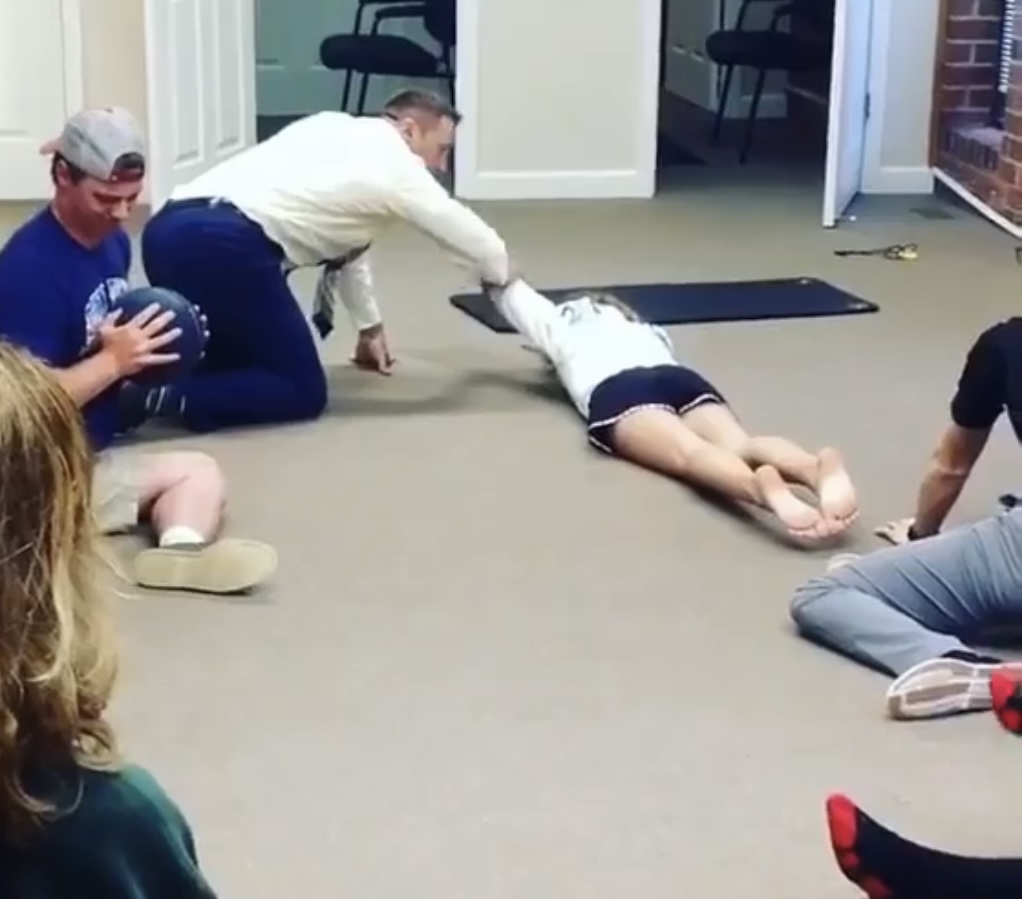
Corrective Exercises Q&A
What is involved in corrective exercise?
The doctors at ChiroFit assess your function and posture to see how your movement patterns may be contributing to your pain. They develop a sequence of exercises that are appropriate for your fitness level and particular symptoms.You learn how to execute the exercises and progress or regress them accordingly. The doctors also give you a detailed prescription of when and how often to practice the exercises at home.How do the doctors assess posture and function?
The doctors use methodologies, such as Selective Functional Movement Assessment and the Functional Movement Screen, to weed out dysfunctional movement patterns. You’re asked to move in multiple ways to see what muscle imbalances or movement patterns may be responsible for your pain.If I am not in pain, do I need to do corrective exercises?
Pain is usually preceded by dysfunctional movement. Workplace injuries are an extremely common issue. Ailments such as back pain, headaches, neck pain, and shoulder pain happen to people in most careers, from firemen to police officers to office employees. Unlike professional athletes, you don’t get to skip work for nagging aches and pains. Functional movement and overall range of motion are a great way to predict an injury before it ever happens.Many injuries and chronic pain are sustained due to everyday tasks associated with the job, from lifting heavy objects to long periods of sitting. It’s easy to focus on how injuries affect athletes, but anyone with a full-time job needs to be trained to tolerate these stresses of their career. Sitting at a desk for 50 hours a week can be more stressful on your body than being a full-time athlete.Corrective exercises help optimize your posture and build movement patterns that discourage injury and pain.Who is a candidate for corrective exercises?
Many people are candidates for the benefits of corrective exercises. You’re an ideal candidate if you have a job that involves repetitive movement or awkward posturing, such as hunching over a computer. If you’ve recently had surgery or an injury, corrective exercise can also help prevent or correct pain due to overcompensation or altered movement patterns.
Sciatica
Sciatica is a symptom, not a condition in itself. It describes the tingling, numbing, and stabbing pain that occurs in your legs, buttocks, and lower back. Sciatica occurs to due compression of the sciatic nerve, which can result due to disc problems or tight muscles. Located in Barrington, Illinois, the doctors at ChiroFit can help get at the core cause of your sciatica and resolve this annoying, debilitating pain.

Sciatica Q&A
What are the symptoms of sciatica?
Sciatica symptoms can range from mild to severe. Usually you only feel it on one side, but sometimes both legs may be affected. Suspect sciatica if you have:- Constant pain in a buttock or leg
- Tingling or burning pain that travels down your leg, sometimes all the way to the foot
- Pain that intensifies while sitting or driving
- Pins and needles sensations in one leg
- Shooting pain when you stand up from a seated position
What is the sciatic nerve?
The sciatic nerve is the largest nerve in the body. It starts in the lower back and its roots branch into the spine and lower back. These roots continue through the buttock and run down the back of each leg. When the root or roots of the nerve are compressed or injured, you experience symptoms of sciatica.What are the causes of sciatica?
Sciatica can occur due to a number of causes. These include:- Herniated disc
- Piriformis syndrome
- Spinal degeneration
- Dysfunction in the sacroiliac joint
How does chiropractic care help relieve sciatica pain?
Chiropractic manipulations improve spinal alignment to relieve pressure on the sciatic nerve. The staff at ChiroFit also provides instruction on corrective exercise to help relieve muscle tightness and imbalances that contribute to your symptoms. Exercises improve the strength of the muscles that run along the spine, supporting proper function and alignment of your vertebrae. Stretching exercises relieve tightness in the hamstrings and glute muscles that commonly compress the sciatic nerve.The piriformis muscle runs above the sciatic nerve and assists in hip rotation. It can be tight or injured due to a fall, arthritis, leg length disparities, or overuse. When it becomes tight and injured, it pinches the sciatic nerve.The benefits of chiropractic and physical therapy are that you’re not just relieving your symptoms, but you’re getting at the root causes of the problem, so it’s less likely to occur in the future.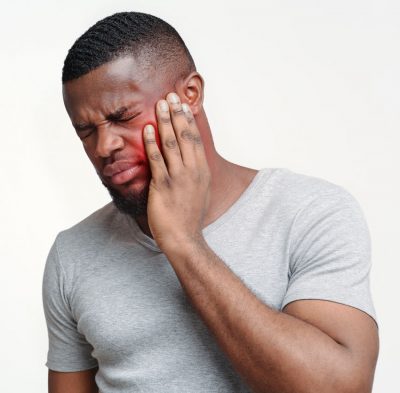
TMJ
Temporomandibular joint disorders, sometimes referred to as “TMJ,” describes irritation of this joint, which connects your jawbone to your skull. Teeth grinding or injury are possible causes, and you might think seeing your dentist is the best way to treat this condition. But the chiropractors at ChiroFit in Barrington, Illinois offer effective, expert treatment for inflammation at this joint. Make an appointment with ChiroFit for comprehensive treatment that addresses the symptoms and causes of TMJ disorders. Call ChiroFit or use the online booking tool to schedule an appointment.

TMJ Q&A
What is TMJ?
TMJ disorders aren’t one problem, but a set of conditions affecting the temporomandibular joint. This hinge joint connects your lower jawbone to the temporal bones at both sides of your head. Typically, the joint moves up and down, side to side, and forward and back. In most people, the joints slide smoothly, but in people with TMJ disorders the movement is compromised.Injuries, arthritis, and repetitive habitual ways of manipulating your jaw contribute to pain and dysfunction. While an aching jaw may seem relatively minor, TMJ can lead to problems with speaking, chewing, and even breathing.What causes TMJ disorders?
A number of different habits and conditions can lead to TMJ disorders. These include:- Teeth grinding, also called bruxism
- Teeth clenching
- Stress
- Nail biting
- Degenerative joint disorders
- Infections or injuries to the jaw
What are the symptoms of TMJ problems?
Discomfort and pain in your jaw are the telltale signs you have a TMJ disorder. Jaw clicking, stiffness, or popping are also signs. Other symptoms may present as:- Earaches
- Problems chewing
- Headache
- Neck and shoulder pain
- Dizziness and vision problems
How can chiropractic help TMJ disorders?
If TMJ results in neck and shoulder pain, chiropractic care helps relieve these symptoms. But chiropractic is about treating the whole person and finding the root cause of your TMJ discomfort, not just addressing the symptoms.Clenching your jaw and teeth grinding, for example, may be unconscious responses to pain in other parts of your body. By adjusting pressure on various nerves in the spine, the pain associated with TMJ may also be relieved. A chiropractor can help alleviate these sources of pain through gentle manipulation, and thus reduce the referred TMJ disorder.The doctors at ChiroFit can guide you in lifestyle changes that help ease TMJ problems, such as stress reduction and certain ways of using the muscles of your jaw so as not to cause inflammation. You learn to relax the muscles of the jaw, which reduces overstimulation causing the pain.Specific exercises also retrain the muscles in the area to reduce inflammation and tension.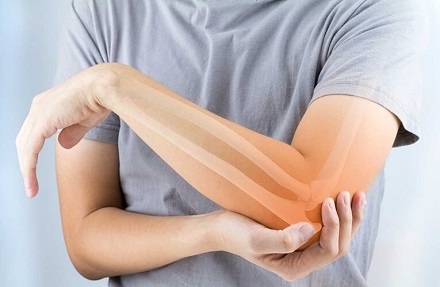
Tendonitis
Tendonitis describes the irritation of a tendon, which is connective tissue that attaches bone to muscle. If you have pain in areas such as your hip, elbow, or shoulder, it may be a result of this tendon inflammation. The doctors at ChiroFit help residents of Barrington, Illinois heal from this annoying, nagging condition.

Tendonitis Q&A
Why do I have tendonitis?
Repetitive action is often the cause of tendonitis. Normal activities performed at work, at home, or during sports and workouts can be responsible. A few examples include:- Swinging a tennis racquet or golf club
- Painting
- Gardening, raking, and shoveling
- Throwing and pitching a ball
Who is at risk of developing tendonitis?
People of any age can get tendonitis, but it often appears after you’ve reached 40. Older tendons are more sensitive to stressors.An injury or any stress placed on a joint puts you at risk. So does poor posture and abnormalities of the bones or joints.Where does tendonitis occur?
Tendonitis can appear at any joint. Some of the most common sites of tendonitis include:- Elbows
- Shoulders
- Achilles
- Hips
- Knees
What are the symptoms of tendonitis?
Tendonitis pain often builds up gradually. You may feel tender at the site of the affected tendon, and the surrounding area may feel inflamed or look swollen. Shoulder tendonitis can result in a loss of motion.On the other hand, sometimes tendonitis pain can come on suddenly.How is tendonitis treated?
At-home therapies such as ice, rest, and over-the-counter anti-inflammatories may ease your symptoms. Chiropractic care and physical therapy address the root of the problem causing tendinitis to occur. At ChiroFit, the emphasis is on rehab and prevention of a recurrence -- not just on addressing the symptoms of your tendonitis.The doctors at ChiroFit can help with muscle dysfunction and imbalance that may be contributing to your tendonitis. Dry needling therapy and other soft tissue interventions also relieve the inflammation in the surrounding muscles.Corrective exercise therapy helps retrain your movement patterns, so you put less stress on the tendons. The doctors also rule out other potential causes for your pain.How long does it take to overcome tendonitis?
Tendonitis can be a long-term issue. It may take several weeks or months to resolve. Healing requires regular treatment and commitment to at-home exercises and therapy.You may experience immediate relief within a few weeks, but it takes time to retrain movement patterns to prevent tendonitis from becoming chronic or progressing to a tendon tear.
Plantar Fasciitis
The plantar fascia is a ligament that connects your heel bone to your toes. When it becomes irritated or strained, the result is plantar fasciitis, a painful condition on the bottom of your foot that nags when you walk, stand, or work out. Chiropractic therapy from the expert team at ChiroFit in Barrington, Illinois, can provide lasting relief. The practice’s experienced chiropractors have helped countless plantar fasciitis sufferers regain a spring in their step.
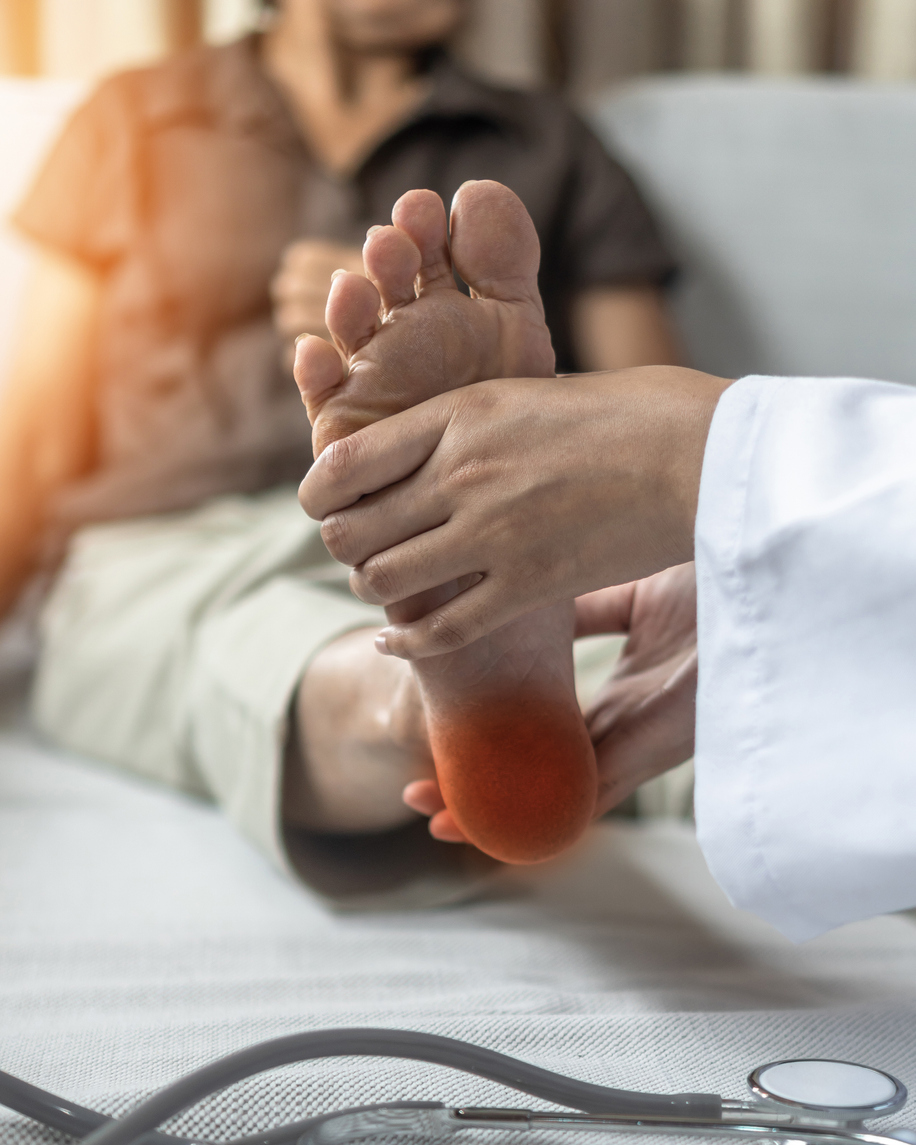
Plantar Fasciitis Q&A
What is plantar fasciitis?
The plantar fascia supports the arch of your foot. When it gets strained, inflamed, swollen, or weakened, it causes pain known as plantar fasciitis. This inflammation of the ligament is a soft tissue condition and one that ChiroFit specializes in treating.What are the symptoms of plantar fasciitis?
You experience pain in the bottom of your foot, towards your heel, when you stand up after sitting for a long time or first thing in the morning. Standing for long periods of time and walking for extended periods of time also aggravates the pain. You may experience the pain in one foot, or both feet.What causes plantar fasciitis?
Plantar fasciitis often strikes people of middle age, but can show up in younger people who spend long periods of time on their feet. Other factors that put you at risk of plantar fasciitis include:- Excessive pronation – turning in when you walk
- High arches or flat feet
- Being overweight
- Poor fitting shoes
- Tight calf muscles and rigid Achilles tendons
How does chiropractic help?
Often, plantar fasciitis is due to the way you walk and hold yourself when standing. Chiropractic helps adjust your posture so that you exert pressure differently on your feet. This makes you walk in a way that relieves plantar fasciitis pain.If you experience plantar fasciitis in one foot and not the other, it may have to do with the way you distribute your weight. You may stand more to one side, or favor one side when walking. The resulting overload on that side leads to strain and inflammation of the plantar ligament. The chiropractors at ChiroFit can help you learn how to distribute weight evenly through manual adjustments and physical therapy exercises.Excessive pronation may be addressed through chiropractic manipulations and physical therapy exercises, too. The doctors at ChiroFit look at your entire pattern of movement and determine what may be contributing to the plantar fasciitis. Then they devise a treatment plan customized for you.What therapies help heal plantar fasciitis?
The doctors at ChiroFit can provide you with daily exercises and stretches to do at home to help heal from your pain. They may also recommend orthotics, regular icing, anti-inflammatory medications, and staying off your feet. Consistent self-care and regular visits to the doctor expedite healing.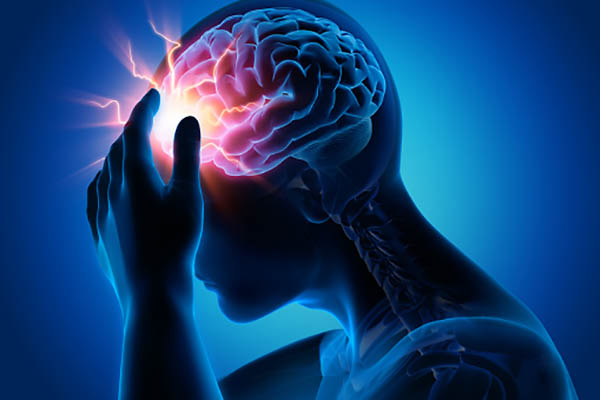
Headaches & Migraines
Many types of headaches, including migraines, can be caused by misalignments in the spine. Migraine sufferers often complain of neck pain along with the pounding, debilitating pain in the head. Chiropractors are well-suited to address the issues of headaches and migraines caused by spinal irregularities and muscle tension in the neck.

Headaches & Migraines Q&A
What are the types of headaches?
Not all headaches are the same. Some are caused by seasonal allergies, sinus problems, or tension. In rare cases, headaches are the symptom of a broader medical condition.Migraines and cluster headaches are other types that can be debilitating and interfere with your work and daily function. Intense forms of these headaches may even cause other symptoms, such as nausea and vomiting.What are the symptoms of a migraine?
Migraines cause moderate to severe pain that may encompass your whole head, or linger on one side. Symptoms that accompany a migraine include:- Sensitivity to stimuli, including light and noise
- Blurred vision
- Dizziness
- Seeing bright light spots or an aura
What are the symptoms of cluster headaches?
Cluster headaches usually manifest on one side and have a throbbing or burning quality. Pain typically lasts 30-90 minutes, but can recur later in the day. You may feel it intensely behind one eye. Cluster headaches usually occur at predictable times.What causes different kinds of headaches?
Migraines and cluster headaches usually stem from changes in your blood vessels. Tension headaches result from tense neck muscles.Possible triggers for your headache include:- Dietary or environmental elements
- Genetics
- Overstimulation
- Stress
- Poor posture
How can chiropractic care help relieve headaches and migraines?
A chiropractor can help with the alignment of vertebrae in your cervical spine that may be pinching nerves and causing headache pain. The doctors at ChiroFit also perform gentle manipulations to help relieve tight muscles that contribute to headache symptoms.Chiropractic care can also resolve or improve the way your body responds to stress, which is a major cause of headaches, including migraines.Is chiropractic care an effective way to treat headaches and migraines?Chiropractic methods are quite successful in treating headaches and migraines that occur due to tension as well as those that originate in the neck.Research shows that migraine sufferers who receive chiropractic care need less medication to deal with their migraine symptoms. Spinal manipulation has also been shown to improve migraines and headaches brought on by issues with the cervical spine.
Hip Pain
Your hips are important to the most basic functional movements, from walking to bending over. If you have chronic hip pain, it makes daily activities challenging, but you don’t need to suffer. The doctors at ChiroFit in Barrington, Illinois can help diagnose what’s behind your hip pain and develop a treatment plan.

Hip Pain Q&A
What are the symptoms of hip pain?
Your hip undergoes a lot of movement every day. If it regularly aches or causes sharp bouts of pain, it needs treatment. Hip pain may also radiate to the thigh, groin, or buttocks. You may feel pain on the inside and outside of the joint.What are the major causes of hip pain?
The hip joint can suffer pain due to overuse or dysfunctional movement patterns. Other causes can be:- Injury or accident
- Osteoarthritis
- Pinched nerves
How can chiropractic care help hip pain?
The doctors at ChiroFit can help determine whether the cause of your hip pain is musculoskeletal. Often it may be due to inflammation of the connective tissue, as with tendonitis or bursitis. Sometimes hip pain may occur due to subluxations, or misalignments, of the vertebrae of the back. The shift in the position of the vertebrae can cause pinched nerves that cause symptoms in the hip. Disc bulges and herniations can also create pain in the hip and can be treated with soft tissue and physical therapy.The experienced chiropractors at ChiroFit use manual adjustments to coax your body back into alignment. They also offer other healing therapies and corrective exercises to ease your pain and prevent it from coming back in the future.What is hip bursitis?
Bursitis is inflammation of the bursa sacs that are located in joints and filled with lubricating fluid. They normally offer relief from rubbing, friction, and irritation -- but when they become inflamed due to overuse or injury, they become their own source of pain.The chiropractors at ChiroFit offer manual adjustments to restore the normal biomechanics of the hip and reduce the friction leading to the irritation of the bursa. Multiple adjustments are necessary to fully benefit from the skeletal alignment changes induced by chiropractic.In addition, ChiroFit offers corrective exercise and physical therapy to address muscle imbalances that may be putting extra stress on your hips and contributing to the irritation of the bursa.What is hip tendonitis?
Hip tendonitis usually develops over time, as the tendon is put under excess strain. Your hip will feel tender at the point of origin of the tendon. Corrective exercises and gentle stretching help relieve the pain and ease the overuse injury. ChiroFit’s doctors can also evaluate your movement patterns to teach you ways to discourage tendonitis from becoming a chronic problem.
Knee Pain
Pain in your knees hampers your ability to get up from a chair, go up and down stairs, or even walk around the block. Consult the chiropractors at ChiroFit in Barrington, Illinois for a possible solution to your knee pain. Muscle imbalances and dysfunctional movement patterns contribute to knee pain. ChiroFit offers manual adjustments and corrective exercise physical therapy to resolve your knee pain
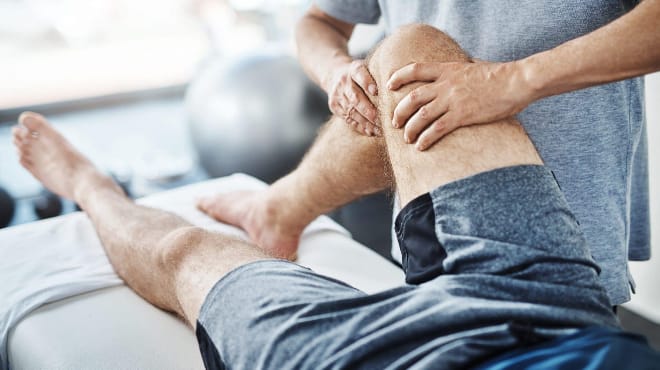
Knee Pain Q&A
What causes knee pain?
An overt injury to your knee is a clear reason for pain in the joint. But the knee is a complex joint subject to a number of not-so-obvious stressors. It experiences a lot of stress and impact daily and moves in multiple directions, which makes it vulnerable to pain and injury.
You may have knee pain due to:
- Muscle imbalances
- Connective tissue injury
- Overuse
- Being overweight
What are common causes of knee pain?
Osteoarthritis is a common diagnosis for knee pain. Other possible causes include:
- Ligament or cartilage damage
- Chondromalacia patella -- pain behind the knee due to inflammation
- Patellofemoral Pain Syndrome
- Lower back problems at the sacroiliac joint, where the hip connects to the spineIliotibial (IT) band tightness
- Runner’s knee -- pain in the front of the knee due to quadriceps pulling on the connective tissue
When should I seek chiropractic care for knee pain?
You don’t have to live with constant, nagging knee pain. Signs that you should consult ChiroFit include:
- You’re overly reliant on over-the-counter pain medications for relief
- You feel pain even with limited movement and while on pain meds
- You have soreness and stiffness accompanied by weakness, popping, or clicking
- You are limited in daily function
A chiropractor can address postural issues and muscle imbalances in your hips, back, ankles, and feet that may be causing, or at least exacerbating, your knee pain.
How can chiropractic care help heal knee pain?
Chiropractic care addresses the underlying issues that may be causing knee pain. The doctors at ChiroFit diagnose knee pain by examining your range of motion and assessing your symptoms. They look at your lower back and pelvic function as well, as these directly impact the knee.Gentle adjustments to your back or knee can improve range of motion and restore normal function. Soft tissue therapy and physical therapy are also options to resolve.If you had to undergo surgery to repair your knee, ChiroFit can help you during rehabilitation, as the doctors guide you through proper stretching and strengthening exercises. You may also receive advice about optimal footwear and at-home exercises to strengthen the muscles around the knee and prevent future pain.

Lower Back Pain
About 80% of people experience low back pain at some point in their lives. The pain varies in intensity and may be the result of an acute injury, or it may develop over time. Whatever the nature of your low back pain, consult the experienced chiropractors at ChiroFit, located in Barrington Illinois, for help. ChiroFit provides manual adjustments, soft tissue therapy, and physical therapy exercises to relieve pain and get you back to work and daily activity

Lower Back Pain Q&A
Why is low back pain so common?
Most low back pain is acute and short term, meaning it comes on suddenly and is resolved within a few days or weeks. The pain may feel sharp and intense or subtle and tingly. It may be at its worst upon waking in the morning or when you sit for long periods.You might be vulnerable to low back pain because of:- Age-related changes of the spine
- Sedentary living
- Weight gain
- Genetics
- Occupational risk factors
- Poor posture
What are some causes of low back pain?
People with chronically “bad backs” generally have a lot of scar tissue present. Any time they bend or twist the wrong way, their backs seem to give out. For most people, the movement isn’t the problem. It’s the fact that the damaged joints are always under extra pressure and are physically incapable of moving the correct way.Muscle or ligament sprains and strains are by far the most common reasons a person suffers low back pain. Other possible causes include:- An accident
- Herniated discs
- Disc degeneration
- Sciatica
- Sports injury